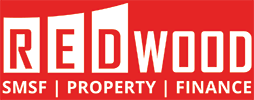Self Managed Superannuation Funds (“SMSF”) has become the vehicle of choice in recent years particularly for “mum and dad” investors who are using their SMSF to buy direct real estate. Further, due to the increasing amount of knowledge of investors and lower costs to set up and run an SMSF and the continued frustration with industry and employer sponsored funds with consistently low or negative returns with continued volatility in the Australian share market.
The number of self managed super fund’s in Australia has surged in recent years with on average 3000 SMSF’s established each month. For many years, SMSF’s were seen as too expensive to set up and run and something that the rich could only afford, however, since the introduction of “Limited Recourse Borrowing Arrangements” or the borrow to buy real estate, SMSFs have become a viable option for Australians looking to secure their retirement with exposure to the Australian property market. Once an SMSF is established, members are able to take control of their super and use the number of strategies available to maximise their super.
What is an SMSF?
An SMSF is a type of trust that can have up to four members, like any Trust it can either Individual Trustees or Corporate Trustees. I recommend that all SMSF’s are set up with a Corporate Trustee. SMSF’s are regulated by the Australian Taxation Office and therefore there are a number of declarations that must be made prior to setting up a SMSF. The key provision is the “sole purpose test” which means that the SMSF must be run at all times for the benefit of your retirement. This is a general principal, however will need to be considered at all times. Members of a SMSF will generally engage a SMSF Specialist to set up and run the fund, however generally, the members makes the decisions of the fund unless they engage a financial advisor to recommend investments for them.
Member and Trustees must understand their responsibilities in running the fund. Although accountants take care of the administration, members must have the skill to run the fund and understand if certain decisions/ strategies comply with Superannuation Law. To me this is quite simple., if you have an attitude of compliance then an SMSF may be suitable for you. However, if you are looking to withdraw your super early or a colourful strategy to breach the law, then an SMSF will not be right for you. The consequences can be disastrous with a number of powers available to the ATO to enforce the Law. It is therefore vital that your partner with SMSF Specialists when setting up and managing your fund.
What are the compliance obligations with a SMSF?
SMSF’s are regulated by the ATO and once established must have a Australian Business Number and Tax File Number which is generally applied for an received immediately or up to 28 days from application date. A bank account can then be established with any bank, and money is deposited into the fund. Each year, you will be require to lodge an annual return with the ATO which will include Financial Statements, an independent audit and income tax return. . The fund is required to have an ABN and TFN and there must be a set of financial statements and tax return prepared annually. These are then independently audited and the tax return lodged with the ATO. Record keeping and documentation retention is of particular importance when managing an SMSF.
What Costs are Involved in Setting up an SMSF?
Whilst there is no minimum balance required to commence an SMSF, ASIC has raised a minimum balance of $200,000 to make the SMSF viable. However, this will depend on your SMSF Strategy which may include contributions including concessional and non concessional contributions which can quickly bump up your super. In relation to set up for a SMSF, the costs for establishment including a corporate trustee will be under $1000. The costs of preparing the Annual Return will be $98 a month measured as a fixed fee rather than a percentage of your balance which is the traditional method adopted by industry and retail fund. When deciding to establish your SMSF, it is important to compare the fees of your current fund with the administration fees of your SMSF.
SMSF Investment Strategy
An SMSF can invest in anything as permitted by your Trust Deed and Investment Strategy. Importantly, your investment must meet the sole purpose test, which simply means that your investment must benefit your retirement. The classic “holiday home” example is relevant, where many Australians would invest in a holiday home in a SMSF, however Superannuation Law requires that no personal use by SMSF members is allowed. There is no grey area, if you are investing in property in a SMSF, the property cannot be used by yourself, and must be rented at arms length to a non- related party. The exception for personal use is “business real property”.
In relation to direct real estate, you can invest and borrow to invest in residential and commercial property. For the self-employed, you are able to purchase an office and rent the office to your personal services business at arms length. Why? the “Business Real Property” must be met.
SMSF Loans
In relation to borrowing to invest in SMSF Property, for residential property, you can borrow up to 80% of the value of the property and for commercial property you can borrow up 70% of the value of the property. A SMSF Property Loan is much different to a standard investment loan, be sure to engage a SMSF Specialist advisor to obtain a pre approval to ensure there are no surprises come settlement.
SMSF Insurance Requirements
Many people are unaware that most industry and retail funds provide its members with life and TPD insurance benefits up to a certain amount. When you roll an existing super balance into an SMSF that insurance cover does not come across to the SMSF – be sure to consider a “partial” rollover to maintain your insurance cover – while you arrange for SMSF insurance in the SMSF name
SMSF’s are awesome, offering choice, flexibility, control and transparency over their retirement nest egg. It is important to seek the right advice before you set up your SMSF to ensure it is structured correctly and to formulate your SMSF strategy for your retirement.
Disclaimer – The content has been prepared by Redwood Wealth Pty Ltd without taking account of the objectives, financial situation or needs of a particular individual and does not constitute financial product advice. This article should not be considered personal financial advice as it is intended to provide factual information only.
Disclaimer –
Please note this article is for information purposes only and does not constitute financial product or legal advice. The content has been prepared without taking account of the objectives, financial situation or needs of a particular individual and does not constitute financial product advice
Ivan Filipovic is authorised through Dover Financial Advisers Pty Ltd – Australian Financial Services Licensee -License No. 30748 – Dover Authorised Representative Number 1244358
Redwood Wealth Pty Ltd – Dover Corporate Authorised Representative Number 1244359





Leave a Reply